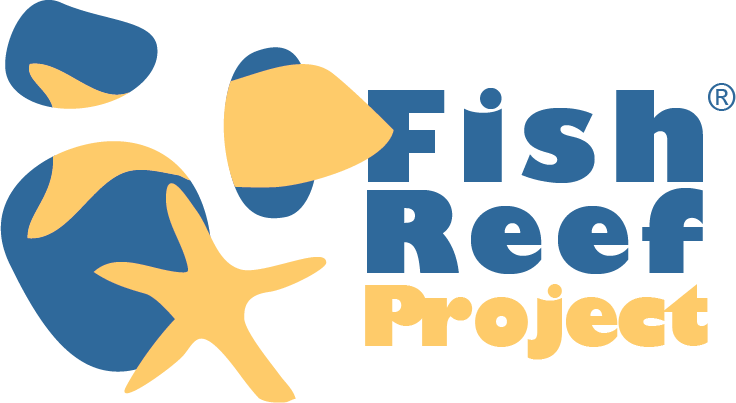Santa Barbara Reef Ball Update
The new ecosystem forming from just 2 reef balls is thriving.

The new ecosystem forming from just 2 reef balls is thriving.
Though a violent boating accident almost killed him, Malibu native Chris Goldblatt still loves the ocean. And he’s got an idea that’s just so crazy it could work.
 Malibu-based ocean conservationist instructs two young inquirers about how and why his reef balls could save the Pacific Ocean. (Photo: Courtesy of Chris Goldblatt)On a moonless night in November 2003, fishermen Chris Goldblatt was awakened by a grinding, sickening crack—the speedboat on which he was asleep was being crushed by a 300-foot petroleum barge.“After I screamed ‘abandon ship’ and jumped off the boat, ping-ponging off the barge that took a big chunk of flesh out of my leg, I remember just screaming and bleeding, convinced I was all alone, pure rage keeping me alive,” says Goldblatt, nearly a decade later from his home in Santa Barbara, CaliforniaHis lifelong love affair with the sea, a place Goldbatt calls “my church,” has compelled him through a variety of marine-related professions. Deck hand. Captain. Sustainable seafood promoter. Marine Protected Area (MPA) fighter and champion. And now reef builder extraordinaire along the Southern California coast.
Malibu-based ocean conservationist instructs two young inquirers about how and why his reef balls could save the Pacific Ocean. (Photo: Courtesy of Chris Goldblatt)On a moonless night in November 2003, fishermen Chris Goldblatt was awakened by a grinding, sickening crack—the speedboat on which he was asleep was being crushed by a 300-foot petroleum barge.“After I screamed ‘abandon ship’ and jumped off the boat, ping-ponging off the barge that took a big chunk of flesh out of my leg, I remember just screaming and bleeding, convinced I was all alone, pure rage keeping me alive,” says Goldblatt, nearly a decade later from his home in Santa Barbara, CaliforniaHis lifelong love affair with the sea, a place Goldbatt calls “my church,” has compelled him through a variety of marine-related professions. Deck hand. Captain. Sustainable seafood promoter. Marine Protected Area (MPA) fighter and champion. And now reef builder extraordinaire along the Southern California coast.
Goldblatt’s current passion are reef balls—think cement igloos—dropped onto the sea floor, which encourage marine life to come back to polluted or overfished areas. He and partners operate three reef projects off the shores of Santa Barbara, Malibu and San Diego.
The conservationist’s come a long way since that fated night nearly ten years ago. Though all five of the boat’s passengers survived, for years afterwards Goldblatt says he “couldn’t look at the ocean, couldn’t stick a toe in it. And working on the ocean was all I’d ever done; 80 percent of my family’s protein had always come from what I caught. But the post-traumatic stress of that accident was so extreme, afterwards I could barely cross the street.”
Recently, I caught up with Goldblatt for a wide-ranging interview on all things ocean.
TakePart: How did you survive getting run down by a barge at night?
Chris Goldblatt: The guy captaining the boat had run into the chain between a tug and the barge, clothespinning the sport boat. After we all jumped off, it came free of the chain just after and split into two like driftwood. Eventually everyone else surfaced around me.
I heard a hissing noise and it was the bow of the boat, sinking. There was an escape pod on the boat, all tangled up in the bow lines, which we managed to cut free just before the sinking boat pulled it down. We all managed to get into the lifeboat, and then we drifted through the night towards the Mexican border. Finally a U.S. Border Patrol boat saw our flares and pulled alongside. They didn’t ask if we were okay; they just wanted to know our nationalities.
TakePart: For the past decade you’ve devoted yourself to helping to improve fisheries in your own back yard, which hasn’t always been easy. Fights over Marine Protected Areas along California’s coast, which often exclude fishing, pitted preservationists against fishermen. But now you seem to have found a project that makes both sides happy?
Chris Goldblatt: Divisiveness is a big problem, where hugely entrenched camps of people become bitter enemies over trying to decide what is the best way forward as far as ocean conservation goes.
I’ve traveled around the world looking at how different fisheries deal with these issues, trying to come up with what can be done globally and locally that could unite people on all sides of the question and produce fast, tangible, measurable results that no one can argue with.
The answer is making thoughtfully designed, well-placed marine life enhancer reefs (using reef balls). I’ve been diving artificial reefs since I was 12 and I don’t like the word artificial, which reminds me of ugly reefs made during the ’70s out of tires and junk and before that by trolley cars and, just off my home in Paradise Bay, out of Studebaker cars.
TakePart: Your Fish Reef Project appears to be working, where some of those early experiments did not.
Chris Goldblatt: We’ve put down three reefs on the sea floor and they are growing like the world’s greatest Chia pets!
Patented by the Reef Ball Foundation of Sarasota, Florida, the reef ball looks like an underwater igloo, full of holes—they come in six different sizes from 300 to 6,000 pounds. The reef balls are made out of a Ph neutral cement and hold about six times the amount of marine life as a boulder the same size.
The reef balls are put down on a hard-packed bottom in less than 60 feet of water and the phytoplankton, which is drifting along, settle on it and grows. We’re not trying to change or manipulate nature, just enhance it.
Ours reefs are in three locations, in depths of 40 to 45 feet off Santa Barbara, San Diego and Malibu, within arms reach of most people in California and the big ocean institutions like Scripps and University of California at Santa Barbara.
Reef balls have been successful off North Carolina, South Carolina, Florida and Alabama, but ours are the first to meet the state of California’s guidelines, which are essentially about mimicking the natural sea floor and then monitoring it for five years. We actually lease the sea floor and the permitting process is lengthy and difficult, which is why no one has done this before us. We had to get the approval of many agencies including the Coast Guard, NOAA, the Coastal Commission, the Army Corps of Engineers and the individual city governments.
Ironically, some of the people who were in favor of the MPLA off Malibu, which I fought because it excluded fishermen from the process, are now some of our strongest supporters, because they can see the benefits, which are measurable, not something you have to guess at or hope for.
This is going to be our great legacy after we’re gone. And we are selling naming rights to the reefs. You could give $1 million to a park, for example, but that park may not be there forever. Even if there’s a nuclear war and the cockroaches take over the planet, these reefs will always be there, on charts, on dive tour guides; they are real legacy builders. For $10,000 we’ll put a brass plaque on a reef ball.
FISH REEF PROJECT SEEKS LOCAL FINANCIAL SUPPORT
The Fish Reef Project is proud to announce the deployment of its first two test reef balls off Santa Barbara. In the water for just five weeks, the small reefs are already covered with young life, including starfish, barnacles, green algae, dozens of crabs and best of all, the reefs are already home to rockfish and the small halibut who love to nestle right up to the reef’s edge. We invite all of Malibu to check out the monthly video logs of the reefs’ progress on www.fishreef.org. The future Malibu reef will be for the entire local community benefit from, learn from and enjoy.
This is a ground breaking, cutting edge ocean enhancement project that requires broad-based support and interest from all sides. As such, I have reached across to people who may not share my strong feelings that man has the right to harvest his protein sustainably from mother ocean. I have met with the Environmental Defense Center, folks related to the Monterey Bay Aquarium, and soon I will speak in front the Santa Barbara Surfrider Foundation, all where there is some common ground.
Despite the vitriolic MPA process, we all agree that the ocean and society will be healthier if we find projects to cooperate on and creation of new fish reefs is stage center. We have also spoken in front of the Channel Islands Sanctuary Board where all the government and agency heads had a chance to vet any concerns. Everyone was there, the DFG, NOAA, State Parks, Coast Guard, Chumash, public at large, business, Environmental Defense Center, Channel Keepers, State Lands and the Coastal Commission, etc. Most everyone showed at least tacit support. The only concerns raised were a desire by the Chumash for us to respect any archeological artifacts, and the Environmental Defense Center did ask questions to be sure we did not cause harm to existing reefs. In both cases, we were able to show that we would meet their needs, including offering a ceremonial Chumash name for the first reef.
Dedicated volunteers and I have spent thousands of unpaid hours to make the reefs a reality. Generous supporters, such as Kelly Meyer, Ricky Schroder, a well known yet anonymous local film producer, Santa Monica Seafood, Fish Wise and Cathy Lee Needleman of the LA Rod and Reel Club have helped us get this far, but we need to go for broke here. The five-acre reefs cost $700,000 to make and permit and an additional $300,000 to monitor and pay for staff along the way. The FRP volunteers and I have day jobs and we can’t hold on much longer without a significant donation to see us through the creation of the first reef.
So I hope Malibu will listen to our offer: For the first donor to step up and donate $1 million—we will name the reef after them, give them a seat on the advisory board and ask their input on location. Their name will appear on charts, bluff-side signs, in dive travel books, on Google earth and much more. They will be creating a permanent legacy that will bear their name for 100 generations to come and ensure that all who come after them will know that they did good with their money, helped make the ocean strong, and offset human impacts such as runoff, fishing, acidification and climate change. Even after we are all gone, the reefs will still be there giving life.
My motivation remains strong. The ocean and the love of it has given me everything I have in this world. The ocean has made me who I am and opened up every door I have ever walked through in this life, and I want only to make sure that young people can continue to walk through those same doors, build strong connections with mother ocean and become brave souls full of wonder and appreciation of the miracle that is the sea. Interested donors can contact us at chris@fishreef.org, or call 831-274-2302.
Long live a healthy ocean.
Chris Goldblatt
“Helping Ocean Life Thrive!®”
The Fish Reef Project is a 501(c)3 non-profit.
All donations are tax deductible.
